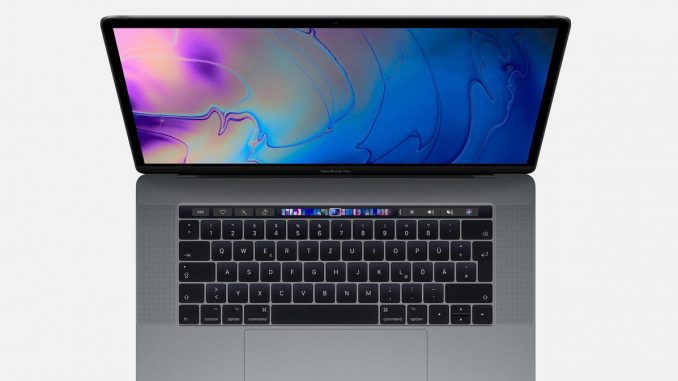
Apple’s new iPad Pro models feature the A12X bionic processor. The ARM processor is so powerful that the company could power MacBooks with it.
Apple depends on Intel
Apple’s Macs have evolved steadily over the years. However, the central component, the processor, always came from other manufacturers. The Apple I and Apple II had a MOS Technology processor. In the Apple Lisa a processor from Motorola was used, just like in the first Macintosh. Later Apple switched to processors from PowerPC, and from 2005 on they finally used Intel processors. Since 2006 all Macs are equipped with an Intel processor.
However, Apple has recently maneuvered itself somewhat into a corner through this tactic. Intel’s processors are becoming more powerful from generation to generation, but the world’s largest chip manufacturer has fallen into a kind of stagnation. The company has repeatedly postponed its own 10nm process for years. The first products with 10nm processors are expected to be launched at the end of 2019. By postponing the new manufacturing process, Intel continues to produce using the 14nm process. Since the company continues to accept orders and also produces its own chipsets with 14nm structure width, the production capacities are no longer large enough. This has led to a massive production bottleneck for 14nm products. Intel is taking countermeasures, but availability is increasing only very slowly.
These production problems do not leave Apple unscathed either. Without real innovation, the world’s most valuable company may even switch to AMD processors. From 2019, these will be manufactured with the 7nm structure width as Ryzen 3000. However, in the long run it could also be the case that Apple at least in the MacBook segment completely makes itself independent of third-party manufacturers and installs its own processors.
Apple A12X Bionic: strong ARM processor in the iPad
Apple has been using its own processors for the iPhone and iPad models for years. These are based on the ARM architecture and are manufactured at TSMC. Although Apple is not independent at this point, the manufacturing processes of the foundry allows it to produce effectively and progressively in 7nm. The Apple processors A12 Bionic and A12X Bionic are already produced with 7nm. The A12 Bionic is used in the iPhone, while the A12X Bionic is built into the iPad Pro.
The iPad Pro was originally intended as an opponent to Microsoft Surface. However, Apple relies on iOS to avoid having to develop a touch interface for MacOS. In addition, an ARM processor can be used because MacOS is currently not running on ARM. Nevertheless, the new iPad Pro is anything but slow and kind of deserves the name “Pro”.
If you believe the Geekbench 4 benchmark, the A12X Bionic even comes close to an Intel Core i9-8950HK with six cores. However, it should be noted that Geekbench scales very poorly on x86 processors. Compared to the A10X Fusion, the performance is still enormous. According to Apple, the processor is 35 percent faster, while the GPU is even 90 percent faster. With eight CPU and seven GPU cores as well as a total of 10 billion transistors, the A12X Bionic can also keep up with desktop processors – at least technically. The clock rate, however, is a different matter and, at 2.490 MHz, is clearly below that of many Intel processors, even in the mobile sector. Especially in the entry area into the Mac world, the own chips can still be an alternative to Intel.
How realistic is an ARM based MacBook?
The question then arises: why doesn’t Apple just switch to its own processors? Rumors about this have been circulating for years. In May of this year, the last leaks occurred that Apple had already selected the contract manufacturer Pegatron for an ARM MacBook. The first Mac with an ARM processor is expected to be launched in 2020. The MacOS operating system is currently still a problem. It is based on the x86 CPUs from Intel and would have to be adapted to the ARM architecture. Apple has already made experience with this when switching from PowerPC to Intel in 2005 and 2006. iOS, which from the beginning only ran on ARM processors, already shares important code elements with MacOS.
However, the software providers are a different story. The applications that are available for MacOS are for the most part also designed for x86. Although there are also mobile applications such as Adobe Creative Suite or Microsoft Office, which differ significantly from the full desktop versions. Accordingly, the software providers would also have to adapt their applications to the ARM architecture. Apple would probably have to integrate a translator into MacOS at the beginning, as it was the case when switching from PowerPC to Intel with Rosetta.
ARM for now probably only in small MacBooks
That Apple could switch to its own processors in the long run becomes more and more probable with more and more powerful ARM processors. Especially with the smaller MacBooks, a switch could soon take place. For example, the 12-inch MacBook relies on energy-saving processors that could be passively cooled. It is therefore likely that Apple will first switch to ARM processors for the small MacBooks.
Especially with the more powerful MacBooks or iMacs and especially the Mac Pro, a switch in the near future is unlikely. Although there are already ARM processors that are also used in servers, the performance of Intel or AMD CPUs is far from being reached yet. But as soon as the kick-off for MacOS based on ARM has been announced, Apple itself could start developing powerful ARM CPUs for the caliber of an iMac Pro or Mac Pro. So the next few years will be exciting for the Mac ecosystem.

Be the first to comment